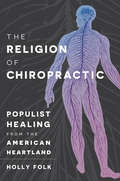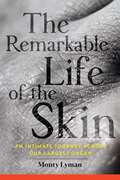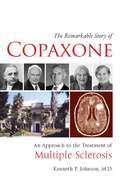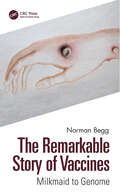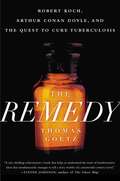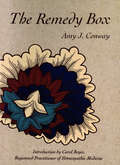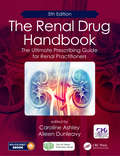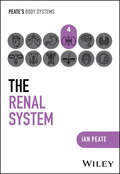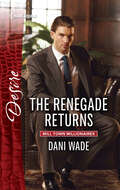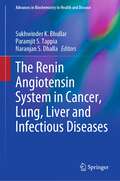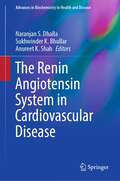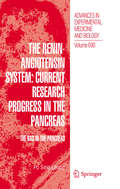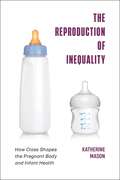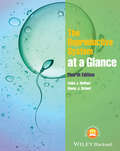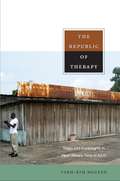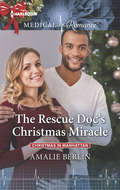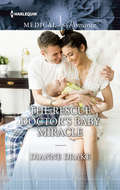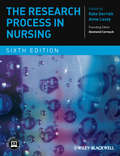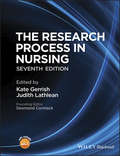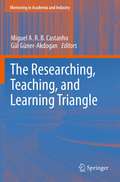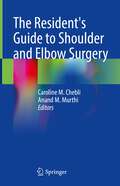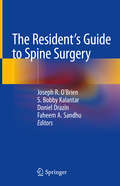- Table View
- List View
The Religion of Chiropractic: Populist Healing from the American Heartland
by Holly FolkChiropractic is by far the most common form of alternative medicine in the United States today, but its fascinating origins stretch back to the battles between science and religion in the nineteenth century. At the center of the story are chiropractic's colorful founders, D. D. Palmer and his son, B. J. Palmer, of Davenport, Iowa, where in 1897 they established the Palmer College of Chiropractic. Holly Folk shows how the Palmers' system depicted chiropractic as a conduit for both material and spiritualized versions of a "vital principle," reflecting popular contemporary therapies and nineteenth-century metaphysical beliefs, including the idea that the spine was home to occult forces.The creation of chiropractic, and other Progressive-era versions of alternative medicine, happened at a time when the relationship between science and religion took on an urgent, increasingly competitive tinge. Many remarkable people, including the Palmers, undertook highly personal reinterpretations of their physical and spiritual worlds. In this context, Folk reframes alternative medicine and spirituality as a type of populist intellectual culture in which ideologies about the body comprise a highly appealing form of cultural resistance.
The Remarkable Life of the Skin: An Intimate Journey Across Our Largest Organ
by Monty LymanThis “seriously entertaining book” explores the skin in its multifaceted physical, psychological, and social aspects (Times, UK).Providing a cover for our delicate bodies, the skin is our largest and fastest-growing organ. We see it, touch it, and live in it every day. It is a habitat for a mesmerizingly complex world of micro-organisms and physical functions that are vital to our health and survival. One of the first things people see about us, skin is also crucial to our sense of identity. And yet much about it is largely unknown to us.With rigorous research and lucid prose, Monty Lyman explores our outer surface through the lenses of science, sociology, and history. He covers topics as diverse as the mechanics and magic of touch (how much goes on in the simple act of taking keys out of a pocket and unlocking a door is astounding), the close connection between the skin and the gut, what happens instantly when one gets a paper cut, and how a midnight snack can lead to sunburn. The Remarkable Life of the Skin takes readers on a journey across our most underrated and unexplored organ. It reveals how our skin is far stranger, more wondrous, and more complex than we have ever imagined.
The Remarkable Story of Copaxone®: An Approach to the Treatment of Multiple Sclerosis
by Kenneth P Johnson"Desperate patients, international geopolitics, pharmaceutical competition, governmental secrecy, a race against time-sounds like the stuff of a best-selling novel. But, no. It is "The Remarkable Story of Copaxone®," In this book, Dr. Kenneth P. Johnson, a highly respected scientist and world-renowned expert on multiple sclerosis, recounts the fascinating tale of the development and rise to prominence of the drug Copaxone®, one of the first agents to significantly impact the course of multiple sclerosis, an often devastating disease of the brain, spinal cord, and optic nerves." From the Foreword by Aaron Miller, MDMultiple sclerosis (MS) is the most common crippling neurologic disease of young adults. Its course is unpredictable; people with the disease never know when new symptoms may appear or if improvement will follow. Virtually every therapy for any human disease had been considered and tried, without finding a useful treatment. This understandably led to despair for people with MS and to frustration and disappointment for clinicians.The development of Copaxone® is among the most unique of modern drug discoveries. Not only is it the enduring legacy of brilliant and determined scientists working over decades; it is also the story of The Weizmann Institute of Science and Teva Pharmaceutical Industries Ltd., two organizations that grew and prospered in spite of a most chaotic and dangerous environment during the early years of the State of Israel. Courage, focus, and dedication to high ideals, as well as excellent science, are the essence of this story.
The Remarkable Story of Vaccines: Milkmaid to Genome
by Norman BeggThis remarkable book tells you everything you need to know about vaccines. Having nearly 40 years’ experience of the subject, the author covers the history of vaccines, how they work, how research is carried out, their safety, how they are used in society, the inside track on COVID-19 and what the future holds. It is a deeply personal account, with anecdotes involving a cow called Blossom, a hospital in the Caribbean, a crocodile-infested lake in Malawi, an encounter with Russian soldiers in Prague and many others. An A-to-Z section covers every vaccine from Anthrax to Yellow Fever. It will educate, entertain and enlighten the vaccine scientific community and public health practitioners. Key Features• Explores a highly topical concept of vaccines in a comprehensive and easy-to-read manner• Engages readers with relatable and interesting anecdotes • Provides a balanced, factual counter to the huge amount of current vaccine misinformation
The Remedy
by Thomas GoetzThe riveting history of tuberculosis, the world’s most lethal disease, the two men whose lives it tragically intertwined, and the birth of medical science. In 1875, tuberculosis was the deadliest disease in the world, accountable for a third of all deaths. A diagnosis of TB#151;often called consumption#151;was a death sentence. Then, in a triumph of medical science, a German doctor named Robert Koch deployed an unprecedented scientific rigor to discover the bacteria that caused TB. Koch soon embarked on a remedy#151;a remedy that would be his undoing. When Koch announced his cure for consumption, Arthur Conan Doyle, then a small-town doctor in England and sometime writer, went to Berlin to cover the event. Touring the ward of reportedly cured patients, he was horrified. Koch’s #147;remedy” was either sloppy science or outright fraud. But to a world desperate for relief, Koch’s remedy wasn’t so easily dismissed. As Europe’s consumptives descended upon Berlin, Koch urgently tried to prove his case. Conan Doyle, meanwhile, returned to England determined to abandon medicine in favor of writing. In particular, he turned to a character inspired by the very scientific methods that Koch had formulated: Sherlock Holmes. Capturing the moment when mystery and magic began to yield to science, The Remedy chronicles the stunning story of how the germ theory of disease became a true fact, how two men of ambition were emboldened to reach for something more, and how scientific discoveries evolve into social truths.
The Remedy Box
by Carol BoyceThe Remedy Box is not intended to replace medical care when it is warranted. The intention is to provide readers with a simple, efficient system of caring for themselves and loved ones in a nonemergency, first aid situation using natural remedies. If, however, symptoms persist, seek the advice of a health professional and always contact your health care professional for chronic conditions. The clear guidelines and straightforward information found on the Remedy Cards make the process of home prescribing for minor ailments simplicity itself. The accompanying book is written in a friendly, accessible style that includes a wealth of advice and experience Amy has collected over the years. The range of choices for dealing with minor ailments at home using gentle, natural methods is enormous and immensely satisfying. Merely having the cards in your possession is empowering. You now have options. As you become familiar with the material, your increased confidence will help to allay much of the fear and anxiety that surround being ill. Empowerment of the patient is a fundamental aspect of the healing mechanism.
The Renal Drug Handbook: The Ultimate Prescribing Guide for Renal Practitioners, 5th Edition
by Caroline Ashley Aileen DunleavyThis invaluable guide, endorsed by the UKMi and reflecting the extensive experience of the UK Renal Pharmacy Group, features drug monographs guiding physicians in how to prescribe, prepare, and administer drugs to patients with different levels of kidney function and when undergoing renal replacement therapy. It has been fully updated for this fifth edition to include up to 100 additional drugs, while maintaining the clear structure and format that is easy to use and simple to follow in the busy clinical setting. It continues to offer support and guidance to health care professionals enabling them to prescribe medications to their renal patients appropriately and safely.
The Renal System (Peate's Body Systems)
by Ian PeatePEATE’S BODY SYSTEMS THE RENAL SYSTEM A CONCISE, ILLUSTRATED, AND ACCESSIBLE GUIDE TO THE RENAL SYSTEM Each of the twelve volumes in Peate’s Body Systems series is rooted in the belief that a deep and thorough understanding of the human body is essential for providing the highest standard of care. Offering clear, accessible and up-to-date information on different body systems, this series bridges the gap between complex scientific concepts and practical, everyday applications in health and care settings. This series makes for an invaluable resource for those committed to understanding the intricacies of human biology, physiology and the various systems that sustain life. The Renal System is the perfect companion for students and newly registered practitioners across nursing and allied health fields with an interest in renal care, providing a comprehensive yet easy-to-digest guide for both academic and clinical application. Equips healthcare students and practitioners with the necessary information to provide safe and competent care Features colourful illustrations to aid comprehension, clarify complicated concepts, and render content more engaging and accessible Empowers readers to adapt to a rapidly evolving healthcare landscape, preparing them for the future of healthcare delivery Contains information necessary for effective patient care of those with chronic and acute kidney disease, urinary tract infection, and other renal diseases and conditions
The Renal System at a Glance
by Christopher O'CallaghanThe Renal System at a Glance is a highly illustrated and practical guide to the structure and function of the kidney, renal, and urinary system. It also covers related disorders and abnormalities and their treatment. Fully updated to reflect the many exciting new developments in the understanding of nephrology, this new edition has been restructured to better integrate basic science and clinical examples to the medical school curricula. New chapters on glomerular filtration and global kidney medicine are included, while the latest guidance and approaches to acute kidney injury, chronic kidney diseases, and renal replacement therapy have also been incorporated. The Renal System at a Glance: Offers clear explanations on tricky topics such as electrolytes, fluid balance and acid-base handling Features new sections on glomerular filtration, and a new chapter on the global differences in kidney problems Includes cross-referencing between basic science and related clinical content Focuses on clinical disorders and investigations - ideal for those embarking on medicine rotations Illustrates each topic in a double page spread, complete with charts, graphs, and photographs This new edition is the perfect guide for medical students, junior doctors, and allied health professionals, including specialist nurses, who wish to learn, or refresh their knowledge, on the kidney and renal system in health and disease.
The Renegade Returns: Expecting The Rancher's Child Saying Yes To The Boss The Renegade Returns (Mill Town Millionaires #3)
by Dani WadeAn injured race-car driver is on the road to recovery with a familiar face from his past at the wheel in this contemporary romance.Champion race-car driver Lucas Blackstone made it his mission to escape small-town life and his dark family legacy. But then an injury sidelined the superstar, forcing him to return home. At least he has Avery Prescott as a physical therapist. The shy young girl is all grown up and impossible to resist. Now he’s ready to have a little fun.Having her girlhood crush right there on her massage table is pretty awkward for Avery. But soon her teenage fantasies become reality. Will she help Luke heal, only to have him run again? Or will he choose to stay . . . for her?
The Renin Angiotensin System in Cancer, Lung, Liver and Infectious Diseases (Advances in Biochemistry in Health and Disease #25)
by Naranjan S. Dhalla Paramjit S. Tappia Sukhwinder K. BhullarThis book of the series on “Advances in Biochemistry in Health and Disease” includes state-of-the-art information on the status of renin-angiotensin system (RAS) in the form of 24 chapters. This book has been organized into three sections: (i) General Implications of RAS in human health and Infectious Diseases, (ii) Lung, Liver and Kidney Diseases, and (iii) Development of Cancer. Each chapter has discussed comprehensive knowledge regarding the molecular and cellular aspects of the role of RAS in the pathophysiology and pharmacotherapy of different disease processes. Biochemical mechanisms associated with angiotensin II type 1 and type II receptors, and angiotensin (1-7) MAS receptors for the occurrence of both harmful and beneficial effects of prolonged activation of RAS in different diseases have been outlined. It is noteworthy to point out that different chapter in this book were prepared by recognized global expertise in the area of inflammation, oxidative stress and signal transduction pathways to highlight the role of RAS in different diseases. It is our sincere hope that this book will be of great interest to both biomedical investigators and health professionals as well as graduate students and postdoctoral fellows all over the world.
The Renin Angiotensin System in Cardiovascular Disease (Advances in Biochemistry in Health and Disease #24)
by Naranjan S. Dhalla Sukhwinder K. Bhullar Anureet K. ShahThis book on “Renin-Angiotensin System in Cardiovascular Disease” includes 25 chapters, which are organized in three sections, namely (i) modulatory aspects, (ii) pathophysiological aspects, and (iii) pharmacotherapeutic aspects. It includes an updated as well as comprehensive knowledge about molecular and cellular aspects for the role of the renin-angiotensin system (RAS) in the pathophysiology and therapy of cardiovascular diseases such as hypertension, atherosclerosis, ischemic heart disease, and heart failure. This book emphasizes the molecular and cellular mechanisms, signaling transduction pathways involved in the development of different cardiovascular diseases due to the prolonged activation of RAS. Furthermore, biochemical mechanisms are outlined for the inhibition of this system by the blockade of angiotensin converting enzyme as well as angiotensin II type 1 receptors in patients suffering from cardiovascular abnormalities. Since cardiovascular disease is the number one cause of death worldwide, leading to approximately 17.9 million deaths each year, there is a keen interest in understanding the pathogenesis and improving its therapy. In this regard, we can attest that this book provides ample information about essential components of RAS and their role in the development of cardiovascular disease.From the selection of recognized global experts in their area of investigation, this book can be seen to cover diverse cardiovascular aspects and molecular and cellular mechanisms of angiotensin II action for the development of different cardiovascular abnormalities. It is our contention that this book will be most suitable for promoting knowledge in the field of RAS biology and will be of great interest to health professionals involved in both experimental and clinical cardiology as well as academic investigators and cardiovascular scientists, graduate students, and fellows worldwide.
The Renin-Angiotensin System: Current Research Progress in The Pancreas
by Po Sing LeungThe human pancreas has vital roles in the regulation of glucose homeostasis and digestion and its dysfunction leads to pancreatic disease as diabetes and pancreatitis. Recent researches have highlighted the novel roles of a local renin-angiotensin system (RAS) in the pancreas and its clinical relevances; its inapprporiate activation leads to pancreatic endocrine and exocrine disease, notably type 2 diabetes. As such, manipulation of the overactive RAS may improve pancreatic islet cell function, cell mass and insulin sensitivity, as well as enhancing the growth and differentiation of pancreatic stem cells. Blockade of the RAS may be protective against pancreatitis and pancreatic cancer. The research outcome of current progress on the RAS in the pancreas should provide an alternative approach to preventing and treating, as well as curing pancreatic disease. This book discusses the progress of research on the renin-angiotensin system in the pancreas from the science to the bedside, providing a timely review of this expanding area. It consists of ten interrelated chapters covering subjects as: - Structure, physiology and disease of the pancreas - Biochemistry and physiology of the pancreatic renin-angiotensin system - RAS in diabetes, stem cells and pancreatitis This book is of special value to basic and clinical scientists, clinicians, graduate students, as well as novices in this field.
The Repopulation of New Orleans After Hurricane Katrina
by Kevin F. Mccarthy Michael Pollard D. J. Peterson Narayan SastryIn November 2005, New Orleans city leaders asked RAND to estimate the repopulation of the city in the aftermath of Hurricane Katrina. The Bring New Orleans Back Commission needed estimates of the city's population in the immediate and near-term future to guide the redevelopment planning process. An assessment of flood damage to housing based on the depth of floodwater and the likely pace of reconstruction of damaged housing guided the estimates.
The Reproduction of Inequality: How Class Shapes the Pregnant Body and Infant Health (Health, Society, and Inequality)
by Katherine MasonAn important analysis of the difference class makes in reproductive health choicesCan you run a marathon, drink coffee, eat fish, or fly on a plane while pregnant? Such questions are just the tip of the iceberg for how most pregnant women’s bodies are managed, surveilled, and scrutinized during pregnancy. The Reproduction of Inequality examines the intense social pressure that expectant and new mothers face when it comes to their health and body-care choices.Drawing on interviews with dozens of pregnant women and new mothers from poor, middle-class, and mixed-class backgrounds, Katherine Mason paints a vivid picture of the immense weight of expectation that comes with the early stages of motherhood. The women in Mason’s study universally sought to give their children a healthy start in life; however, their chosen approaches varied based on their socio-economic class. Whereas middle-class mothers attempted a complete lifestyle change and absolute devotion to the achievement and maintenance of “the healthy pregnant body,” poorer women made strategic choices about which health goals to prioritize on a limited budget, lacking the economic and cultural capital required to speak and perfectly adhere to the language of “good health.” The unfortunate result is that middle-class mothers are more likely to be seen by others and by themselves as “good” parents, whereas the efforts of working-class mothers are often misread as displaying inadequate concern about their health and that of their child. This in turn contributes to longstanding stereotypes about poor families and communities, and limits their children's chances for upward mobility. The Reproduction of Inequality is a compelling analysis of the impact of class on new mothers’ approaches to health and wellness, and a sobering examination of how inequality shapes mothers’ efforts to maximize their own health and that of their children.
The Reproductive System at a Glance
by Linda J. Heffner Danny J. SchustThe Reproductive System at a Glance is a comprehensive guide to normal reproductive biology and associated pathophysiology in both sexes. Concise, easy to read, and clearly structured, the double-page spreads progress from basic science to clinical abnormalities, and covers endocrine production and action, within one short volume. Chapters on disorders summarise epidemiology, pathophysiology, diagnosis and treatment.This new edition of The Reproductive System at a Glance:* Is fully revised and updated throughout to reflect recent developments in practice* Now features histological and pathological slides to complement the "at a glance" style explanatory illustrations* Now features radiologic studies to supplement the text in selected chapters* Contains more detailed coverage of maternal adaptations to pregnancy* Includes a companion website at www.ataglanceseries.com/reproduction featuring self-assessment multiple choice questions, bonus single answer questions and flashcardsThe Reproductive System at a Glance is an ideal guide for students studying both endocrine and reproductive subjects, and teaches the foundation concepts for the obstetrics and gynaecology rotation, helping health professionals and students achieve a broad and practical understanding of the topic.
The Republic of Therapy: Triage and Sovereignty in West Africa's Time of AIDS
by Vinh-Kim NguyenThe Republic of Therapy tells the story of the global response to the HIV epidemic from the perspective of community organizers, activists, and people living with HIV in West Africa. Drawing on his experiences as a physician and anthropologist in Burkina Faso and Cte d'Ivoire, Vinh-Kim Nguyen focuses on the period between 1994, when effective antiretroviral treatments for HIV were discovered, and 2000, when the global health community acknowledged a right to treatment, making the drugs more available. During the intervening years, when antiretrovirals were scarce in Africa, triage decisions were made determining who would receive lifesaving treatment. Nguyen explains how those decisions altered social relations in West Africa. In 1994, anxious to "break the silence" and "put a face to the epidemic," international agencies unwittingly created a market in which stories about being HIV positive could be bartered for access to limited medical resources. Being able to talk about oneself became a matter of life or death. Tracing the cultural and political logic of triage back to colonial classification systems, Nguyen shows how it persists in contemporary attempts to design, fund, and implement mass treatment programs in the developing world. He argues that as an enactment of decisions about who may live, triage constitutes a partial, mobile form of sovereignty: what might be called therapeutic sovereignty.
The Rescue Doc's Christmas Miracle
by Amalie BerlinFrom partners to parents! Dr. Gabriel Jackson and paramedic Penny Davenport make a great team-despite driving each other crazy! She's Manhattan Mercy's daredevil helicopter pilot, who thrives on adventure after a childhood spent wrapped in cotton wool, while he's the cautious flight doctor who, after a disastrous marriage, will never take risks again. But after the elation of surviving a storm explodes into passion, Penny discovers she's pregnant! This could be an unforgettable Christmas-if they listen to their hearts and take the greatest risk of all!
The Rescue Doctor's Baby Miracle
by Dianne DrakeA new life--a new hope... When Dr. Gideon Merrill finds out Dr. Lorna Preston is coming to film his search-and-rescue operation in a storm-devastated Brazilian village, everything he's tried to forget comes flooding back. Their passionate affair, their failed marriage--the baby they lost. Forced to work with her, he's soon struck by how different--how incredible--Lorna is. But a night of passion changes everything, and as they work miracles to save countless lives Gideon knows he and Lorna might just have made a tiny miracle of their own. Could a precious new life herald the start of an amazing new future--together?
The Research Process in Nursing
by Anne Lacey Kate Gerrish'The perfect text for any health care professional who wishes to gain a sound understanding of research...This text succeeds where others fail in terms of the thoroughness of the research process and the accessible style in which the material is presented. In an age when nursing and health care research is going from strength to strength this book offers those in the world of academia and practice an excellent and essential 'bible' that is a must on any bookshelf'Dr Aisha Holloway, Lecturer Adult Health, Division of Nursing, The University of Nottingham'a book that helps you each step of the way. A very understandable and enjoyable publication'Accident and Emergency Nursing Journal 'key reference resource that students of research can use at various levels of study. It is comprehensive, user friendly and very easy to read and make sense of'Gillian E Lang, Amazon reviewerThe sixth edition of this book reflects significant developments in nursing research in recent years, ensuring the reader is provided with the very latest information on research processes and methods. It continues to explore how to undertake research as well as evaluating and using research findings in clinical practice, in a way that is suitable for both novice researchers and those with more experience.Divided into six sections, the chapters are ordered in a logical fashion that also allows the reader to dip in and out. The first two sections of the book provide a comprehensive background to research in nursing. The third section presents a variety of qualitative and quantitative approaches, both new and well-established. The final three sections then look at collecting and making sense of the resulting data and putting the research findings into clinical practice.Summarises key points at the start of each chapter to guide you throughIncludes contributions from a wide range of experts in the fieldAccessible but doesn't shrink away from complex debates and technical issuesNew to this edition:Accompanying website (www.wiley.com/go/gerrish)Ten completely new chapters including Narrative Research, Mixed Methods and Using Research in Clinical Practice'Research Example' boxes from a wide variety of research types
The Research Process in Nursing
by Kate Gerrish Judith LathleanComprehensive and thorough in scope, The Research Process in Nursing 7th edition provides everything you could want to know about research methods. This established textbook reflects the significant advances in nursing research and the importance of evidence-based practice, and provides an invaluable resource for both the novice and the more experienced researcher. It includes practical information and advice on: How to find and critique the evidence How to choose the right approach How to collect data How to make sense of the data How to put research into practice Special features: A clear, explicit and easy to understand text which links theory with practical steps in the research process. Examples provided allow the reader to apply a variety of research concepts to theoretical learning and professional practice. Incorporates chapters, research examples, and policy from a range of international countries, including Canada, Australia, USA and Hong Kong. Provides detailed discussions around each example, which clearly link theory with practice Easy to read for novice researchers and undergraduate nursing students, but at the same time provides sufficient depth and detail to be of value to experienced researchers and practitioners.
The Researching, Teaching, and Learning Triangle
by Gul Guner Miguel A. CastanhoIt is impossible not to ask ourselves how to cope with the role and impact of scientific research in teaching and learning. The researching, teaching and learning triangle explores a growing trend among top universities across the world to focus attention on the quality of post-graduate education and the success of the educators, using pioneering examples, ranging from classroom-level initiatives to university-wide projects. This book will be of interest to all scientists, from the budding beginner to the seasoned supervisor.
The Resident's Guide to Shoulder and Elbow Surgery
by Anand M. Murthi Caroline M. ChebliUtilizing a practical, high-yield presentation, this textbook is a comprehensive review of the most common shoulder and elbow diagnoses and management strategies. It allows easy access to pertinent information for residents and fellows while preparing for rounds, the clinic and the operating room and also aides residents studying for their yearly in-training exam (OITE). Each topic is organized in a consistent, bulleted format so that the information flows in a logic manner: history, physical examination, imaging (when and what to order), and the most appropriate treatment algorithm. The most common classification systems are emphasized and illustrated, and treatment algorithms are further organized into non-operative and operative and include surgical approaches as well as the risks and complications of surgical intervention. The shoulder and elbow are covered in their own exclusive sections, with each chapter discussing the unique diagnostic considerations for each anatomic structure and the types of injuries to expect. Topics in the shoulder section include osteoarthritis, rotator cuff arthropathy and tears, instability, stiffness, SLAP tears and biceps tendinitis, and fractures of the clavicle and scapula. Topics in the elbow section include biceps and triceps rupture, lateral and medical epicondylitis, instability and stiffness, and elbow fractures - distal humerus, Monteggia, the terrible triad and more. Case material, key points and takeaways, and question-and-answer elements are included to enhance the text's overall utility. There is currently no textbook on the shoulder and elbow tailored specifically for orthopedic residents, fellows and senior medical students. The Resident's Guide to Shoulder and Elbow Surgery therefore provides a much-needed resource for early-career clinicians and surgeons.
The Resident's Guide to Spine Surgery
by Joseph R. O’Brien S. Bobby Kalantar Doniel Drazin Faheem A. SandhuWith an emphasis on set-up and execution and lessons learned from expert practitioners, this concise, practical guide for residents and fellows presents the essentials for both common and complex spine surgery. Proceeding anatomically from the cervical to the sacroiliac, and including chapters on spinal tumors, infection and revision surgery, nearly 40 different procedures are highlighted, from corpectomy, arthroplasty and laminectomy to percutaneous screws, decompression and fusion. Chapters include all the information a resident will need to know: indications and contraindications, imaging and diagnosis, OR set-up and instrumentation selection, the specific operative technique, post-operative protocols, and clinical pearls and pitfalls. Radiographs and full-color intraoperative photographs accompany each procedure. Whether suturing dura or performing a lateral interbody fusion, spinal surgery is a technical pursuit, and having a firm grasp of the details can ultimately determine the procedure's success. Written and edited by veterans in orthopedic surgery and neurosurgery, The Resident's Guide to Spine Surgery is just the detailed, user-friendly resource for up-and-coming clinicians looking to develop and expand their surgical expertise.
The Resilience Blueprint: Beat burnout and get your bounce back
by Dr Dani GordonYou're never too unhealthy, too tired or too late to become the most dynamic, energetic and resilient version of yourselfWe'd all like to be able to bounce back from life's inevitable setbacks, whether those are health issues or emotional challenges. And perhaps we're resilient in one area, such as never catching colds, but not in another, such as we're constantly feeling overwhelmed and anxious. That's because each of us has a resilience type, and if you're not aware of yours, all of your efforts to be healthy may be failing to make a difference. Even the most up to date health advice may not be right for you if it's wrong for your type.Find out if you're a highly strung WOUND-UP WARRIOR, an emotional MOODY WARRIOR, a drained EXHAUSTED WARRIOR, or an easily distracted SCATTERED WARRIOR. Integrative functional medicine doctor Dani Gordon will guide you to identify your personal resilience type, and then offer all the scientifically backed health advice you need to put her transformative 8-week resilience programme into action.This empowering and compassionate guide gives you not just the tools, but the confidence to change your life.
